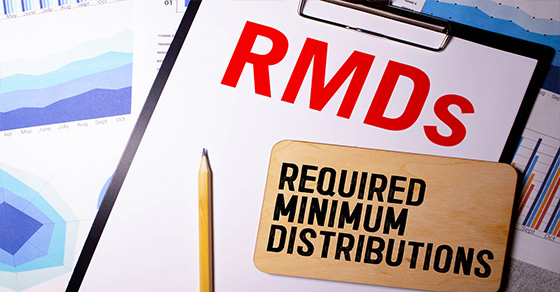As you may know, you can’t keep funds in your traditional IRA indefinitely. You have to start taking withdrawals from a traditional IRA (including a SIMPLE IRA or SEP IRA) when you reach age 72.
The rules for taking required minimum distributions (RMDs) are complicated, so here are some answers to frequently asked questions.
What if I want to take out money before retirement?
If you want to take money out of a traditional IRA before age 59½, distributions are taxable and you may be subject to a 10% penalty tax. However, there are several ways that the 10% penalty tax (but not the regular income tax) can be avoided, including to pay: qualified higher education expenses, up to $10,000 of expenses if you’re a first-time homebuyer and health insurance premiums while unemployed.
When do I take my first RMD?
For an IRA, you must take your first RMD by April 1 of the year following the year in which you turn 72, regardless of whether you’re still employed.
How do I calculate my RMD?
The RMD for any year is the account balance as of the end of the immediately preceding calendar year divided by a distribution period from the IRS’s “Uniform Lifetime Table.” A separate table is used if the sole beneficiary is the owner’s spouse who is 10 or more years younger than the owner.
How should I take my RMDs if I have multiple accounts?
If you have more than one IRA, you must calculate the RMD for each IRA separately each year. However, you may aggregate your RMD amounts for all of your IRAs and withdraw the total from one IRA or a portion from each of your IRAs. You don’t have to take a separate RMD from each IRA.
Can I withdraw more than the RMD?
Yes, you can always withdraw more than the RMD. But you can’t apply excess withdrawals toward future years’ RMDs.
In planning for RMDs, you should weigh your income needs against the ability to keep the tax shelter of the IRA going for as long as possible.
Can I take more than one withdrawal in a year to meet my RMD?
You may withdraw your annual RMD in any number of distributions throughout the year, as long as you withdraw the total annual minimum amount by December 31 (or April 1 if it is for your first RMD).
What happens if I don’t take an RMD?
If the distributions to you in any year are less than the RMD for that year, you’ll be subject to an additional tax equal to 50% of the amount that should have been paid out, but wasn’t.
Plan ahead wisely
Contact us to review your traditional IRAs and to analyze other aspects of your retirement planning. We can also discuss who you should name as beneficiaries and whether you could benefit from a Roth IRA. Roth IRAs are retirement savings vehicles that operate under a different set of rules than traditional IRAs. Contributions aren’t deductible but qualified distributions are generally tax-free.
© 2022


